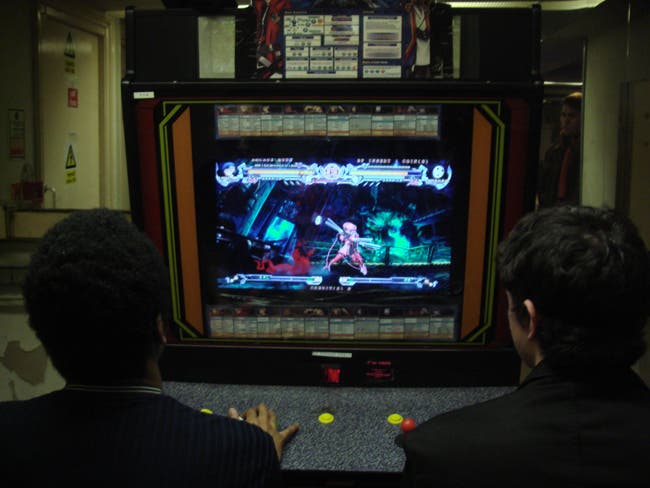BlazBlue: Calamity Trigger
Thank goodness for arcades.
Capcom is a company responsible for much invention in the fighting game field, and of its hit and miss attempts to push the medium forward, X-Men vs. Street Fighter was the defining point in a new era of 'manic' fighting games. With the action cranked to eleven, it redefined the genre in a new, frenzied form. Although Arc System Works' Guilty Gear is no idle rip-off, it has drawn influence from Capcom's crossover series.
Even if its complexity can be eluding, with beautiful anime styling, heavy-metal themes and wildly overblown combos, there's no denying its spectacle. With Guilty Gear, the Yokohama-based developer has not only raised the profile of 2D fighting games over the last ten years, but has itself become a recognised power in the field.
In light of this success it's unfortunate to learn that, through a legal loophole, Arc System has lost the Guilty Gear rights to SEGA Sammy Holdings. It's no surprise then that it's urging fans to adopt its latest fighting game, BlazBlue, in its place.
Situated to the right of Goodge Street station, Casino, one of Central London's oldest arcade establishments, is looking a little run down. The carpet patterning looks like the seating upholstery on a 1970s National Express coach, the Electrocoin cabinets are bordering on antique and the walls could use a serious lick of paint. But despite being guilty of aesthetic complacency, Casino eschews the current to stubbornly serve the hardcore market. Be this for financial reasons or through the influence of its denizens, who knows. For a while, the London Trocadero's line-up of Japanese Candy-Cabinet housed fighting games has played the more popular host to the dwindling London scene. With the advent of BlazBlue in Casino - its first appearance in Europe - the old place is suddenly alive again.

Running on Taito's Type X2 hardware, BlazBlue is one of the first 2D fighting games to be designed from the ground up in high definition. It's very similar to Guilty Gear in style, with similarly vibrant graphics and an even crisper display. The backgrounds are in 3D, but with enough detail and colour depth to sit comfortably with the foreground sprites. Initially the designs don't quite leap out at you like some of the better Guilty Gear locales; but little touches, like the influence of certain moves on Rachel's rose garden and some impressive background activity, really lend the game atmosphere.
Although the high-definition display hasn't improved the animation much beyond Arc System's already excellent standard, BlazBlue's ten original characters are distinct, colourful and vivid. But, despite obvious artistic similarities, they aren't as initially striking or appealing as the Guilty Gear line-up. With Ragna, the sword-toting Sol Badguy replacement, it's clear Arc System hasn't lost its affection for belts and buckles. Blond-haired Jin bears a close resemblance to Ky, as does his female counterpart, the gun-toting and annoyingly shrill Noel.
Tager is an obvious stand-in for Potemkin, steamrolling your energy bar with a repertoire of debilitating grab attacks, and Rachel and Carl have the whole gothic thing going on. Arkune, the game's token 'weird' character, presents the first opportunity to play as a demon from a Miyazaki flick, his warped design lifted straight from Spirited Away.
BlazBlue isn't as female-heavy as Guilty Gear, with Litchi being the only one to sport a set of proper high-definition boobs. The jury is out on what creepy cat-like Taokaka is meant to be, and that just leaves Bang, a fairly uninspired Ninja whose voice acting lends him great individuality.


